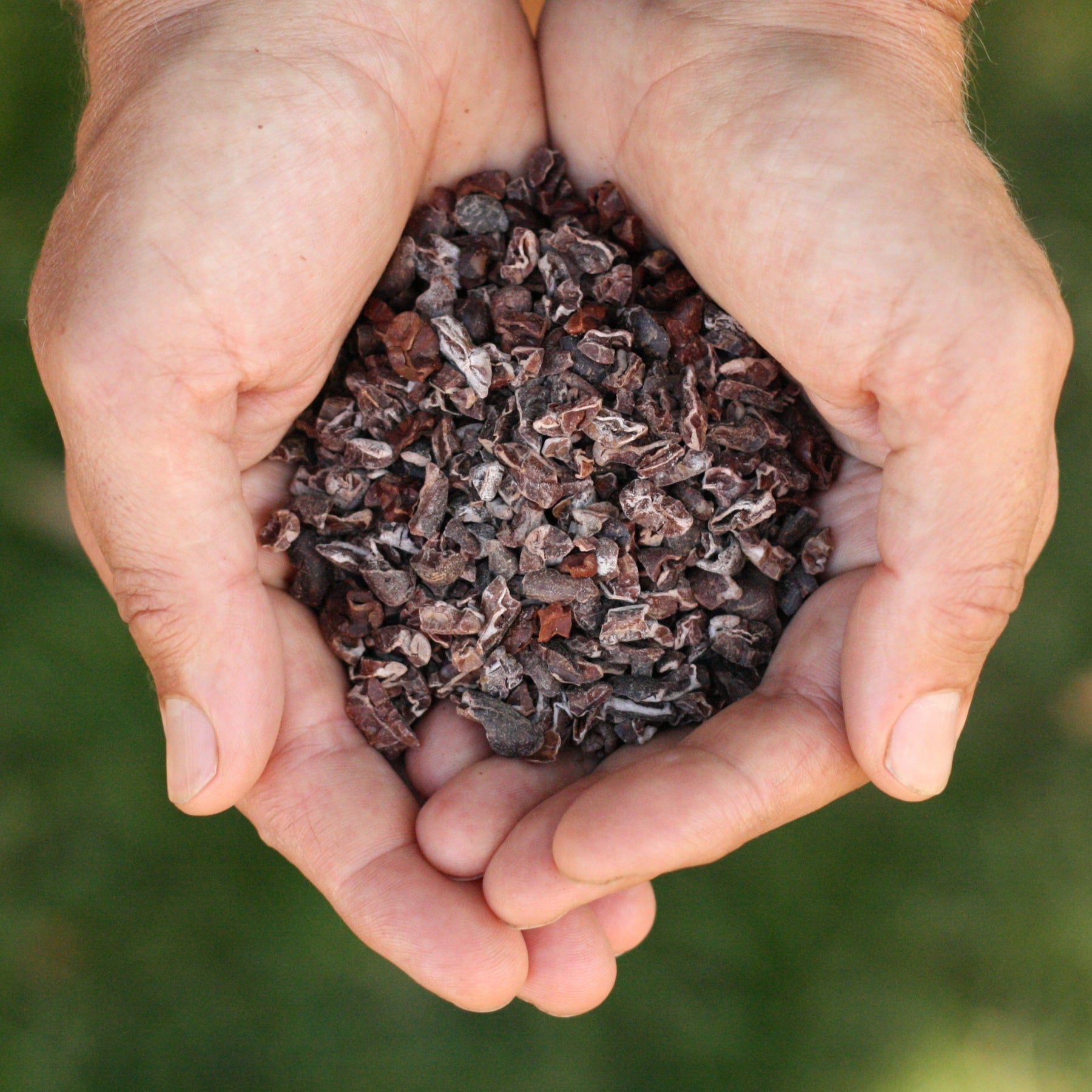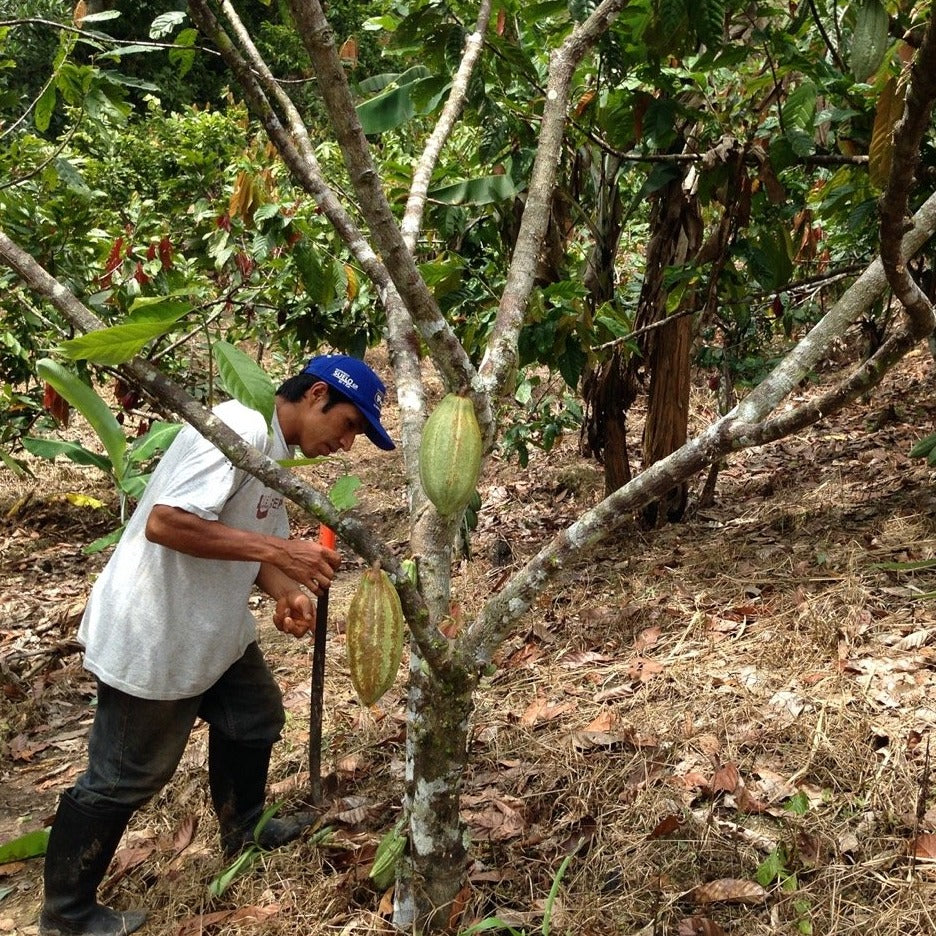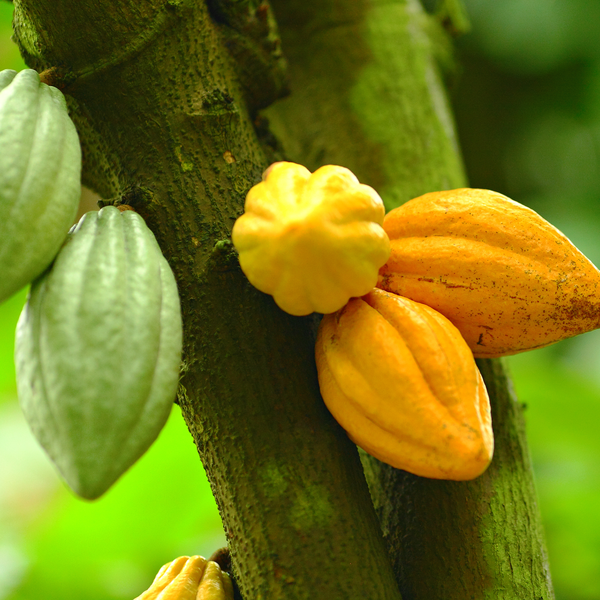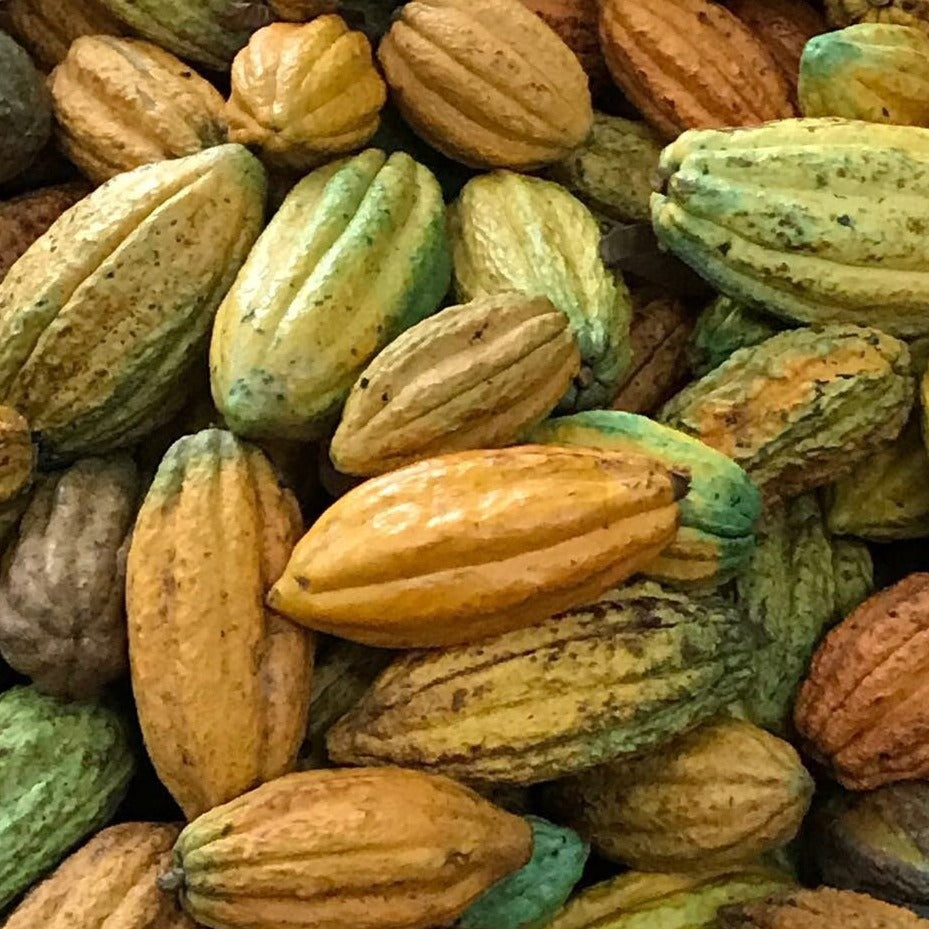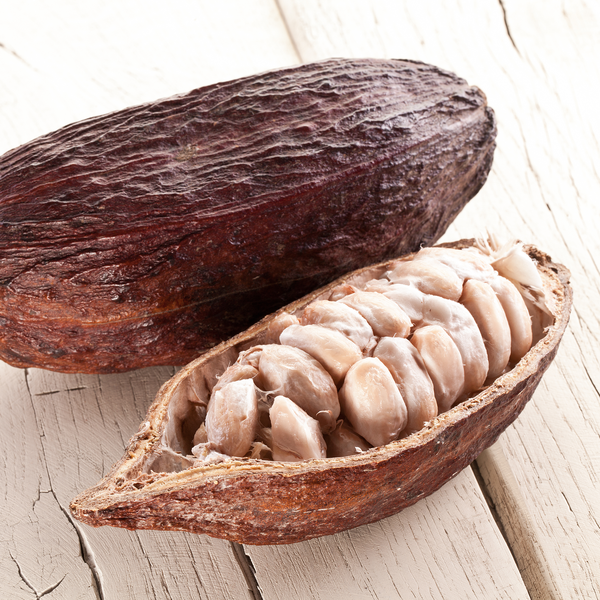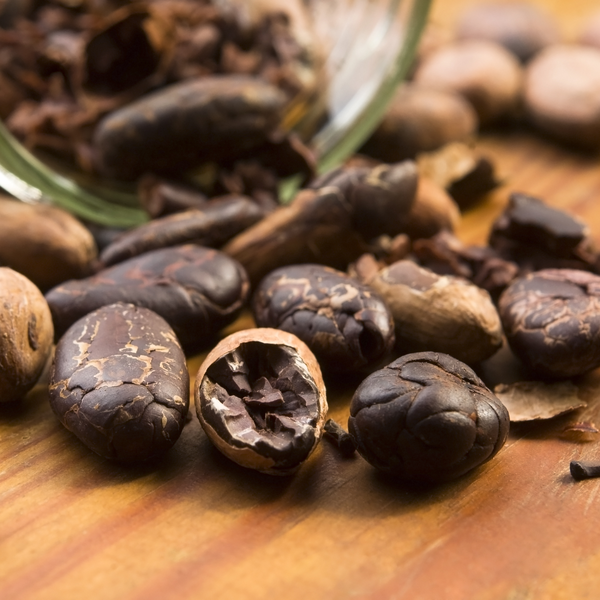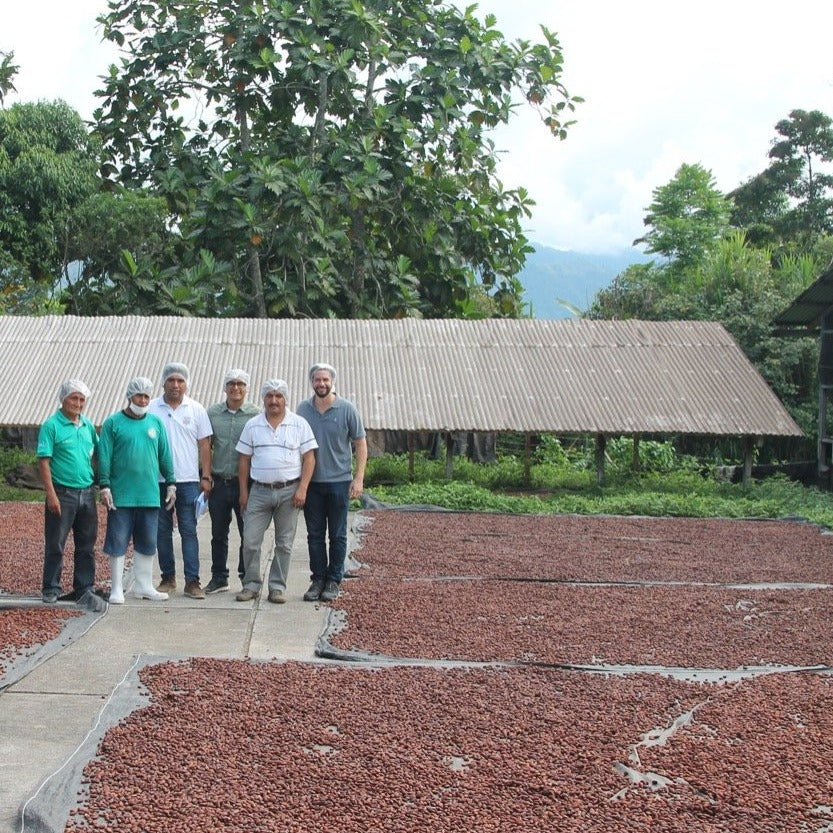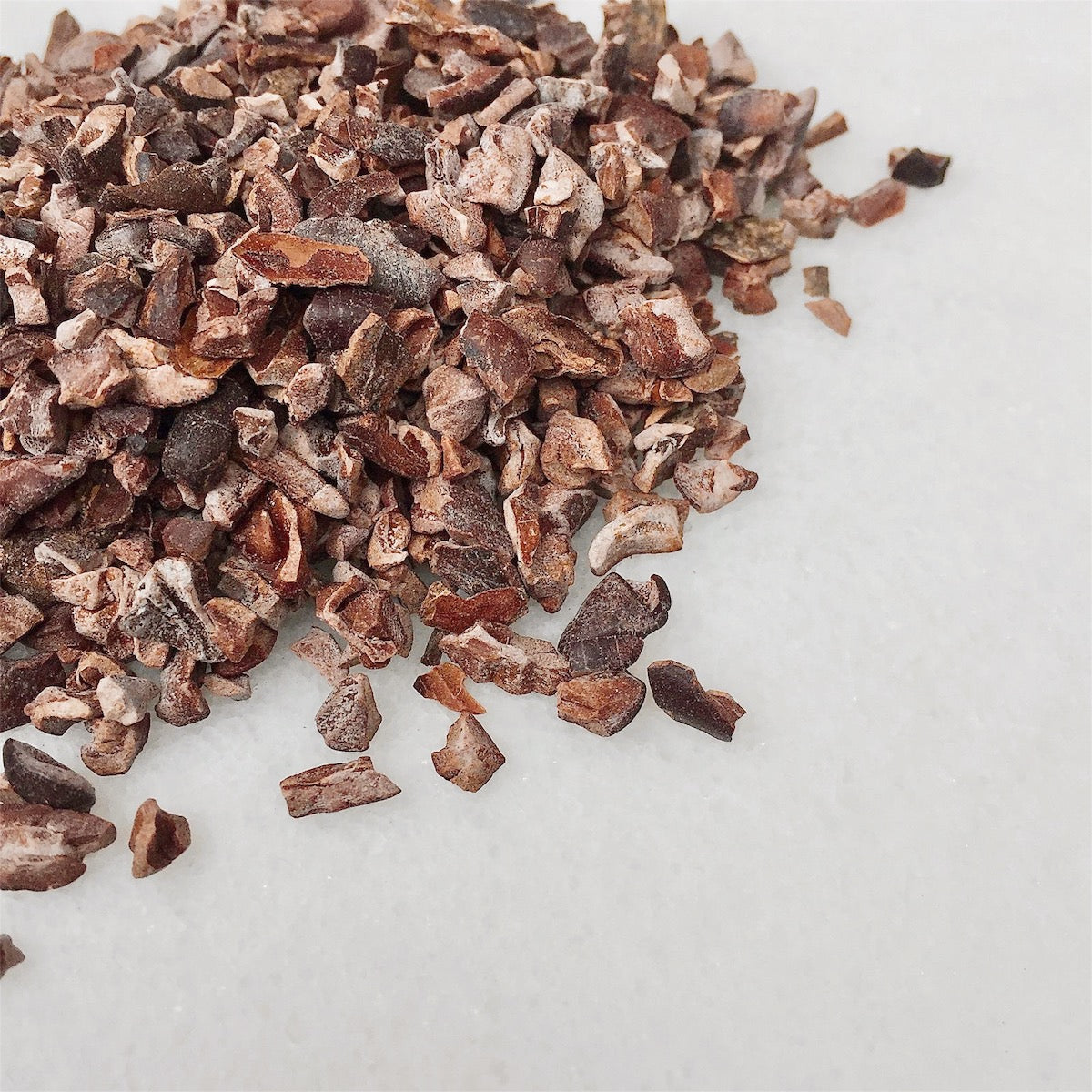No items in your cart
Continue ShoppingOur cacao nibs are pure chopped cacao beans from Peru. They undergo a fermentation process, this fermentation process is necessary to transform the flavour into what we associate with cocoa and chocolate. Without fermentation there would be no chocolate flavour!
The beans came from the north of Peru in the San Martin region, from the Huallaga river regions. The cacao varieties in this region are mainly native and aromatic trinitarios and criollos.
The area is mountainous with deep valleys, and is about 600m above sea level. It is a difficult terrain for traditional farming, but the best for cacao!
We work with organized groups of farmers and communities who produce mostly aromatic cacao.
The cacao varieties in this region are mainly aromatic trinitarios and criollos.
In your purchase of this cacao we are supporting a region that used to be primarily a coca plant producing region. The coca plant is completely legal, and makes great teas and other medical uses…but unfortunately it is the main ingredient for the creation of the illegal cocaine drug. This region used to be heavily dominated by drug cartels.
Nowadays with a lot of push from the Peruvian government and also the encouragement and help from international governments, farmers have switched to other crops.
Many have switched to cacao. Specifically in this region, high quality cacao is being produced, and because of the great soil, growing conditions and techniques the farmers have learned, the yield is high. The average yield is close to 1000kg per acre.
This great combination plus the support of the European and North American governments, has allowed the farmers to flourish in the cacao agriculture, are now coming out of extreme poverty and are on a great path to a sustainable future.
This region now happens to have the highest concentration of certified organic farmers in the world.
Cacao nibs are commonly used instead of chocolate in cookies, baked goods or smoothies.
Gluten, peanut and soy free.
More about organic here.
Cacao Recipes here
Cacao Nutrition here
Cacao Information here
Cacao Nib Recipes
Macadamia nut, oatmeal, cacao cookies here
Add to smoothies, yogurt, top on desserts any of your chocolate containing recipes.
Nutritional Information for Cacao Nibs
Cacao contains theobromine, a caffeine-like substance, but minute amounts of actual caffeine. Still, it is considered mildly stimulating and has anti-depressive properties.
It is rich in magnesium and people often crave chocolate because their bodies are magnesium deficient.
Cacao is known for its high favonoid content which helps protect blood vessel linings - helpful for those with high blood pressure.
It is also extremely high in antioxidants - as much as 10.9 mmol/100 g - which still isn't as high as herbs (known to have the most) but is higher than commonly known antioxidant-rich foods like cranberries & blueberries.
General and Historical Information About Cacao
Theobroma cacao (or just cacao) is a small 13-26 ft evergreen tree. It takes 4-5 years to bear fruit and offers about 20 pods per tree per year. About 20 pods are required for a pound of cacao paste. It has been cultivated and used by humans for more than 4,000 years, but shown to have grown long before the last ice age 21,000 years ago.
It is commonly thought to come from Mesoamerica but recent research shows cacao originating from around the Brazil Peru border where it could have survived the ice age. The earliest evidence of human consumption does still come from Mesoamerica where it looks like it was fermented into an alcohol and used for medicinal purposes in concoctions containing things like corn, chili, vanilla and honey. If you visit Oaxaca or the Mayan Riviera today it is easy to get a similar drink called Tejate.
Traditionally it was not only consumed but used as currency, in ceremonies, sacrifices and medicinally. It wasn't discovered by Europeans until the early 1500s but quickly became popular.
References
Haas, Dr. Elson and Dr. Buck Levin. Staying Healthy with Nutrition.New York: Ten Speed Press, 2006. Print
Nutrition Journal 2010, 9:3 doi:10.1186/1475-2891-9-3. "The total antioxidant content of more than 3100 foods, beverages, spices, herbs and supplements used worldwide." http://www.nutritionj.com/content/9/1/3
Pitchford, Paul. Healing with Whole Foods. Berkeley: North Atlantic Books, 2002. Print
WHFoods. "Is cocoa healthy, and if it is, why is it not included on the WHFoods list?." http://whfoods.org/genpage.php?pfriendly=1&tname=dailytip&dbid=179
Wiki. "Theobroma cacao." https://en.wikipedia.org/wiki/Theobroma_cacao
